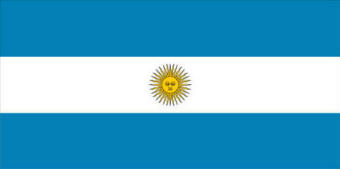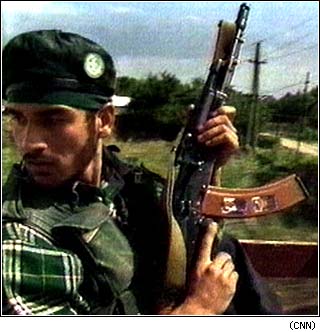Raxtia
| |||
| National motto: RAXTIA VON REMIS | |||
| National anthem: The Formiale | |||

| |||
| Region | South America | ||
| Capital | Relekettia | ||
| Largest City | Neuesville | ||
| Population | 14.3 Million (03/9/07) | ||
| Suffrage | 18+ years of age | ||
| Official Language(s) | Spanish (official) English (de facto) | ||
| Government President
Supreme Leader |
Federal Democracy Emanuel Fererosa Che Guevara | ||
| Independence Continued Uprising First Uprising |
2010 2009 2007 | ||
| ISO Nation Code | RXA | ||
| Currency | Special Drawing Rights (SDR)
| ||
| Time Zone | -3 hours | ||
| • Summer (DST) | -3 hours | ||
| Internet TLD | .rx | ||
| Calling Code | ++(00)191
| ||
| National Symbols • Sport • Animal • Fruit • Flower |
Extreme Ironing Tyrannosaurus Rex Apple Lotus | ||
| UN Status | NON-MEMBER | ||
| Info: NationStates NSEconomy Pipian NS Tracker XML | |||
The Incorporated States of Raxtia is a small country of around fourteen million people (03/9/2015 RY [2007 AD]) Located in the North of South America.
Contents
History
In late October 2007 there was extreme anger and disquiet in Venezuela's North-Eastern region of Raxtia. The anger was a Hugo Chavez's policies of opposing the United States. By this time, American exports to Venezuela had completely stopped, leading to severe shortages of everything from bullets to coffee. An extremist group known as the Liberation Forces of Raktia, Led by Cuban revolutionary Che Guevara, stirred up hatred against the government. This hate had soon spilled over into violence and soon Venezuela was in a full blown civil war. The war dragged on for many years and, in June 2009, engulfed Neighbouring Guyana, which fared much worse than Venezuela, being smaller and less developed. By 2010 Guyana was near to total anarchy and Venezuela had lost it will to fight on, and by March of that year the republics of Raxtia and the Northern Guyanian federation had become independent, ending the war. By August, the Northern Guyanian Federation was already finding the repair bill from the war far too large for it to handle alone, so it was forced to unite with Raxtia.
Geography
Raxtia's grographical landscape is dominated by rainforests. Almost 85% of Raxtia is covered by rainforests, which in recent years has proven to be a hindurance to further development of the nation, although recent mining activities have decreased the size of the rainforests slightly. Raxtia has no main rivers, but does have several small rivers, used by some of the rainforest tribes that inhabit the South-Eastern Regions. Raxtia has no mountains and is generall a rather flat landscape, although some parts can be hilly.
People and Places
Raxtia's small population of around 6 million is mostly located in the cities and towns of the nation and is mostly descended from European settlers in the area.
Raxtia does, however, have some native peoples, totalling around 0.43% of the population of Raxtia (just over 61,000 people).
Around 74% of Raxtia's population is located in the cities and towns, the largest of which being Neuesville. The Most populated area is the northern province of Altarō, where the capital is located.
The main population centres of Raxtia are:
Neuesville
Located to the South-West of Raxtia, Neuesville is home to 1.8 million people, more than a tenth of the population of Raxtia. It is Raxtia's largest city, at 135 square kilometers, and is the financial hub of the nation. Neuesville houses two of Raxtia's best universities and attracts many businesses. From the air it's many skyscrapers make it look a little like New York, thus earning it the nickname of 'Poor Mans Manhatten'.
The city was founded in the 1620's as a Spanish trading post but quickly spread and by 1635 it was home to over 10,000 people, and from there it grew into the metropolis that it is today.
Relekettia
Relekettia is the capital and second-largest city in Raxtia. Home to around 1.1 million people it is built on the site of a former native settlement. There are rumours that many older buildings in Relekettia are haunted by the ghosts of natives who were killed during the city's construction.
Relekettia is located to the more populous Altarō area of the country and has generally good links with the rest of the country, as the land surrounding it is generally flat and is not covered by trees, unlike Neuesville.
Formerly one of Raxtia's primary ports, operations were shut down after a series of fatal accidents, culminating in an oil tanker exploding whilst docked, killing 20 and injuring many more. This led to the closing down of the harbours in Relekettia, which are now earmarked for regeneration.
Sao Ronolo
Sao Ronolo is an industrial city of 750,000 people. After the closing of the ports in Relekettia, Sao Ronolo, with its brand new harbour structures, became Raxtia's primary port city. The city is largely dominated by manufactuirng plants, some of which have recently come under investigation on charges of abusing workers and being environmentally unsafe.
Sao Ronolo lacks reasonable railway and road links to the rest of Raxtia, however, as it is surrounded by rainforests, a problem in many of Raxtias towns. Plans to build a highway linking Sao Ronolo and Relekettia were scrapped after environmental concerns were taken into account.
In recent years, a large black market of loggers has emerged in and around Sao Ronolo, leading to crackdowns by police.
Serpienna
The only city in former north Guyana, Serpienna is a relatively new city of 236,000 people and it is the smallest official city in the country. It was designated a city in early November 2015.
Originally designed by the Venezuelan government for use a a financial hub, the plans were dropped halfway through the city's construction due to the impending civil war. It was bombed repeatedly by the Venezuelans during the war and it has been slowly recovering ever since. In late September the population exceeded the required 250,000 mark and by October it was Raxtia's newest city.
Raxtia has no other officially designated cities, however there are a few towns and there are many villages throuought the nation.
Government
The govermnent system of Raxtia is one where senators are elected for each of 150 designated regions throughout the nation. The party that controls between 50 to 75 of these seats is designated as the government. Should there be a tie between parties, then the parties have two weeks to form coalitions with other parties. If they do not, then there will be a new round of voting.
The president is the leader of the nation and has overall say on issues. The supreme leader has only a ceremonial role, and gives final approval for new laws after they have passed through the senate. In theory, the supreme leader can challenge the laws, but in practice, he has little power to do so.
The cabinet is chosen out of the elected senators. The current cabinet is:
- Supreme Leader: Ché Guevara
- President: Emanuel Fererosa
- Vice President: Juan Herbesté
- Budgetary Minister: Ferdinando Medarocé
- Minister of State for Health: Pablo Montara
- MoS for Education: Carlo Menetez
- MoS for Home Affairs: Remio Attara
- MoS for Foreign Affairs: Matteus Kirlinge
- MoS for Defence: Carl Navara
- MoS for Social Affairs: Juliana Sanchez
- MoS with No Portfolio: Karel Lopiana
There are three main branches of the government:
Senate The Senate debates over laws the government wishes to pass, checks they are fair and votes for or against the laws being passed.
Judiciary The Judiciary ensures that the laws are enforced and that they are enforced fairly and honestly. The judiciary also controls the courts.
Civil Service The Civil service works to apply the laws and ensures that the Judiciary is doing its job.
2015 Budget
The government recently announced its budget for 2015. This budget announced an initial universal income tax cut from 7% to 1% for around two months before taxes go back up to 3% then possibly higher. The government also annonced a significant decrease in spending as well as an announcement that contracts would be awarded to Nukes4You to mine the small uranium deposits in the south west of the nation.
On the defence front, the government stated that Raxtia would not build a military force until 2017 at the earliest. They did, however, promise between $1.5 billion and $3 billion at the next budjet to form four intelligence and security services (Foreign Intelligence and Security Service (FISS), Raxtian Domestic Security Service (RDSS), The Organized Crime Prevention Department (OCPD) and The Office Of Comms (OOC)). The police will also recieve an unspecified amount of extra funding to help them cope with rising crime levels in Raxtia.
Economy
Raxtia has built a stable, stong economy, based mainly on commerce. Despite having no major exports, Raxtia continues open trade relationships with nations worldwide. This attract many companies to set up in Raxtia, and many production plants have set up.
Oddly, for a country with no organized armed forces, Raxtia's short list of exports includes many major shipments of arms to other nations. In fact, Arms Dealing is the fourth biggest industry in Raxtia, the largest being the Gambling industry. The Largest company in Raxtia, Nortel, is an arms business.
Most of Raxtia's buisnesses are headquartered in Neuesville, the financial capital, with manufacturing plants mostly being centred around Sao Ronolo and the surrounding areas. The very bad travel links of Raxtia are not a problem to many companies and Raxtia is the site for a good many TNCs.
Defence
Raxtia is unique in that it has no organized, government funded, military force. Instead it relies on the former Venezuelan resistance group the Liberation Forces of Raxtia, numbering between 25,000 and 100,000, for its defence capability. As such it posesses only limited naval capability, no air power and is incapable of fighting a war overseas. It thus relies on positive diplomacy and tries not to get into trouble wherever Raxtia can avoid it. There are no approved plans to build a military force, however plans to turn the Liberation Forces of Raxtia into Raxtia's military were scrapped after protests from the group. Many other ideas, such as the government funding the group, were also scrapped. However, it is increasingly likely that, some time in the future, Raxtia will build a military force. Raxtia does posess a police force, numbering 10,000
At the recent budget, however, no spending was allocated to defence and no definite commitments were made to building a military.
Intelligence services, however, are already beginning to take shape. The Foreign Intelligence and Security Service is already beginning partial trial operations, despite not having funding directly allocated to it until the 2016 budget. The interim operations are bringing together 750 staff from the police, the intelligence branch of Customs Services, some specialist members of the LFoR (under a spacial agreement) and will hire 100 operational officers from the wider population. The trial is a test run to see how well FISS will work and if any considerations need to be taken before beginning full operations. The full operation will begin next year and will enlargen the force to 2,000 staff.




